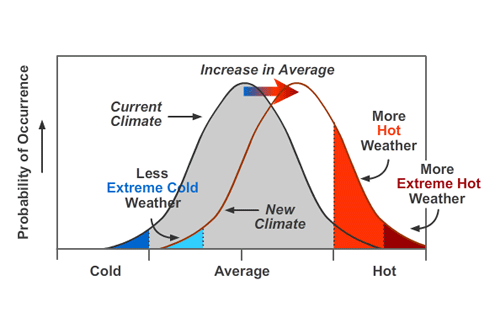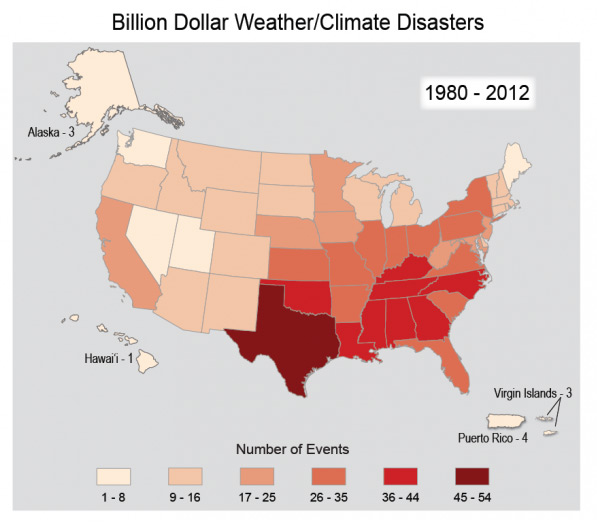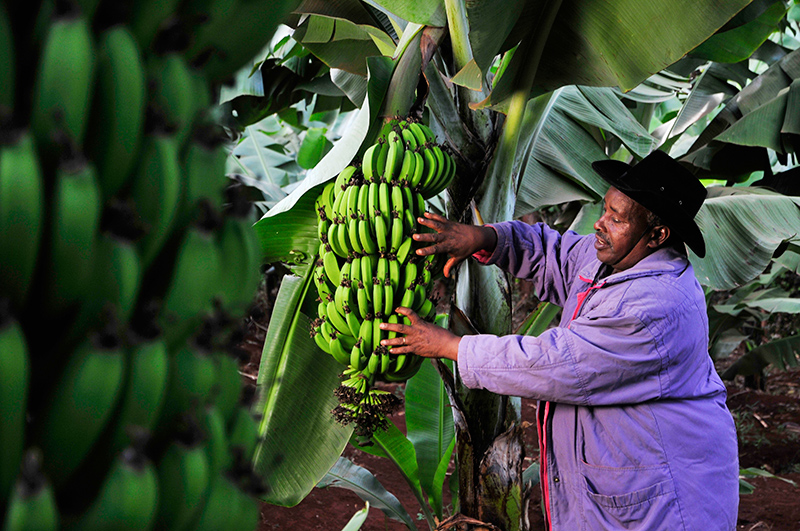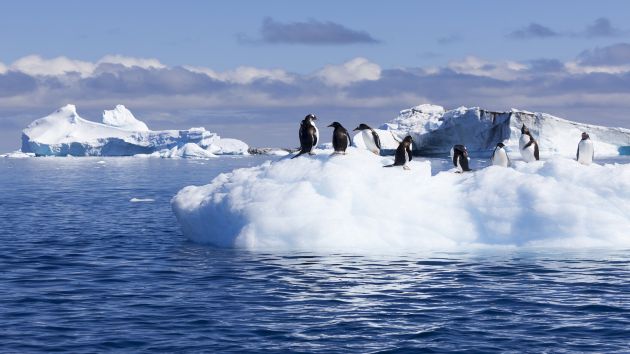Published by the US EPA
Photo Courtesy of www.thenation.com
- Events that typically don’t happen very frequently, such as droughts or floods that have historically occurred on average only once in 100 years.
- Events that vary from “the norm” in severity or duration, like heat waves.
- Events whose impacts are severe, like hurricanes.
Key Points
- Extreme weather events are becoming more frequent and/or severe around the world. This is consistent with what we expect with a warming planet.
- Increasingly frequent and/or severe weather events have serious consequences for society and ecosystems.
- Between 2011 and 2013, the United States experienced 32 weather events that each caused at least one billion dollars in damages.
- Changes in some weather events are more closely linked to climate change than others.
- Understanding the links between climate change and extreme events can help us plan for the future.


Watch the animation here (requires Flash) to learn how this shift is happening.
Related Links
Changes in Extreme Weather and Climate Events
Scientists study many aspects of change in extreme weather and climate events. These include:
- Frequency: Are events occurring more often than they did in the past?
- Intensity: Are events getting more severe, with the potential for more damaging effects?
- Duration: Are events lasting longer than “the norm”?
- Timing: Are events occurring earlier or later in the season or the year than they used to?
Extreme weather is typically rare. But climate change is increasing the odds of more extreme weather events taking place.
Establishing the most likely causes behind an extreme weather event can be challenging, since these events are due to combinations of multiple factors, including natural variability. Nevertheless, scientists have been able to draw a connection between some types of extreme climate patterns—an even some individual events—and climate change. A good way to think about this connection is to focus on whether an extreme weather event was made more likely by climate change.
There have been changes in some types of extreme weather events in the United States over the last several decades, including more intense and frequent heat waves, less frequent and intense cold waves, and regional changes in floods, droughts, and wildfires.[1] This rise in extreme weather events fits a pattern you can expect with a warming planet. Scientists project that climate change will make some of these extreme weather events more likely to occur and/or more likely to be severe.
Adaptation: Reducing the Threat of Climate Change and Preparing for its Impacts
Extreme weather and climate events pose a serious threat to the health and welfare of American families and businesses. For instance, between 2011 and 2013, the United States experienced 32 weather events that each caused at least one billion dollars in damages.[7] 2012 ranks as 2nd costliest year on record, with more than $110 billion in damages.


This map summarizes the number of times each state has been affected by weather and climate events over the past 30 years that have resulted in more than a billion dollars in damages. The Southeast has been affected by more billion-dollar disasters than any other region. The primary disaster type for coastal states such as Florida is hurricanes, while interior and northern states in the region also experience sizeable numbers of tornadoes and winter storms. For a list of events and the affected states, see: http://www.ncdc.noaa.gov/billions/events. Source: USGCRP (2014) Billion Dollar Weather/Climate Disasters.
EPA is taking a number of common-sense actions to reduce greenhouse gas emissions and help cities and towns build more resilient communities to prepare for the impacts of a changing climate, including the weather extremes described above.






